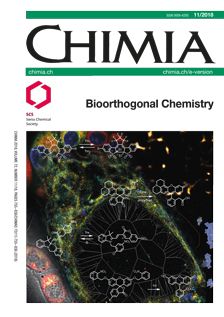Recent Developments and Applications of Photoconjugation Chemistry
DOI:
https://doi.org/10.2533/chimia.2018.782PMID:
30514421Keywords:
Bioorthogonal ligation, Chemical biology, Photoconjugation, Small molecule probeAbstract
Understanding of biological systems has always been the general interest in chemical biology, and chemical modifications of biomolecules are often required to elucidate their functions and properties. There has thus been a rapid development of covalent chemistries for the modification of macromolecules. Among these strategies, photochemistry provides the advantage of using biocompatible light as an energy source to trigger bioconjugation reactions; this circumvents the use of toxic reagents (e.g. metal catalysts and chelating ligands). Light-induced chemistry can achieve precise spatial and temporal conjugation of biomolecules in their native environment.Downloads
Published
2018-11-30
Issue
Section
Scientific Articles
License
Copyright (c) 2018 Swiss Chemical Society

This work is licensed under a Creative Commons Attribution-NonCommercial 4.0 International License.
How to Cite
[1]
Chimia 2018, 72, 782, DOI: 10.2533/chimia.2018.782.







